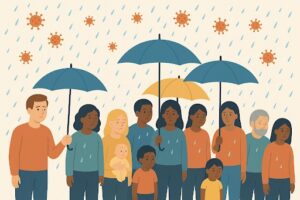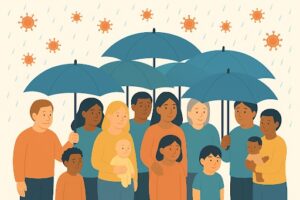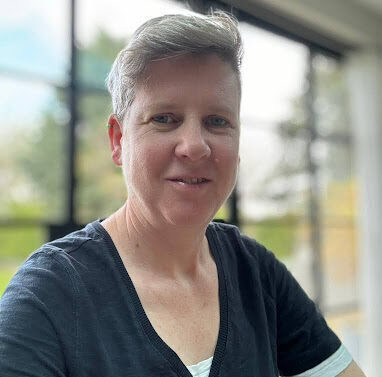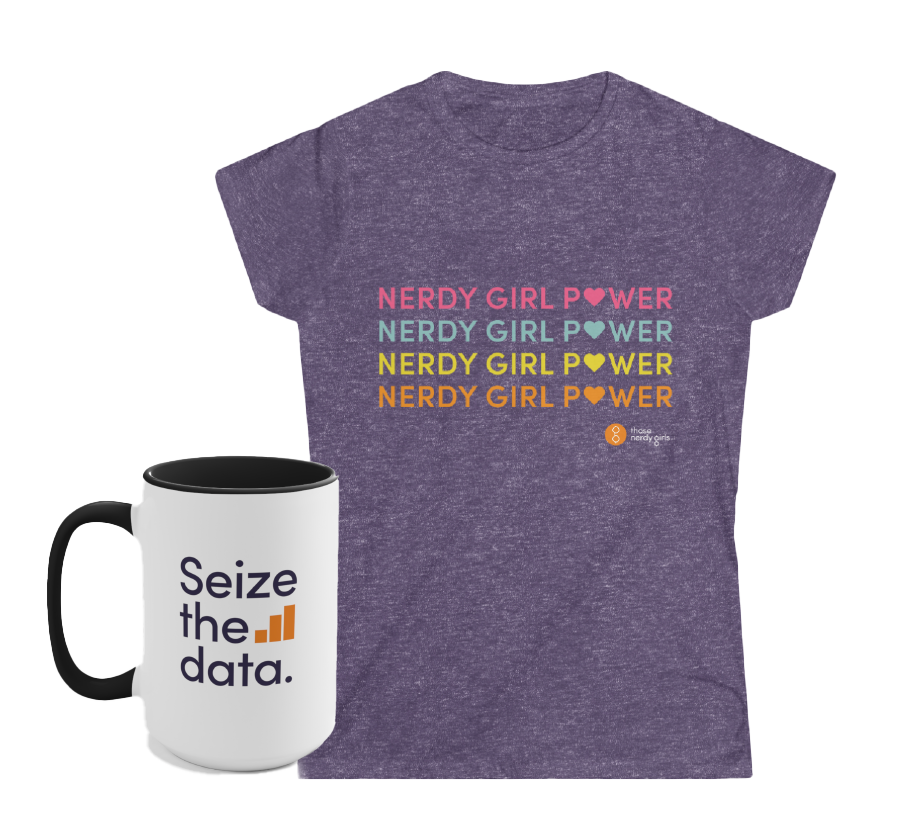Community immunity (aka “herd immunity”) is a really important factor in preventing the spread of infectious diseases… and just like an umbrella can protect you and the person standing next to you from the rain, vaccination can do the same.
Did you know?
The term herd immunity was first used when British scientists back in the 1920s wrote about their findings of this effect in animals – and surprisingly, it wasn’t cows in a field, but mice in a lab! 🐁🧪🔬
Many scientists now prefer the term community immunity (yes, it’s a mouthful!) because it better reflects that we’re a community of people working together to protect each other.
☔ The Umbrella Effect
Imagine it’s raining, and you don’t have an umbrella. If you’re standing alone in the rain, you’ll get wet. But if you’re surrounded by people with umbrellas standing close together, their umbrellas shield you, too – you stay mostly dry even without your own umbrella.

Not enough community immunity – some folks get wet

Community immunity at its best, folks stay dry, even if they don’t hold an umbrella
(Images created by author with ChatGPT)
Vaccination works in a similar way. When enough people around you are vaccinated (have umbrellas), it’s more difficult for a virus to get to you, even if you’re unvaccinated. So the vaccinated folks create a protective barrier (with their umbrellas) that stops the virus (rain) from spreading through the community (and getting folks who don’t have umbrellas wet).
This is especially important for people who can’t get vaccinated – like babies too young for certain vaccines, people with compromised immune systems, or those with severe allergies to vaccine components. They rely on the “umbrellas” of others to stay safe.
🦠 The Measles Example
Measles is a great example of why this matters so much. It’s one of the most contagious diseases we know – like a torrential downpour rather than light rain. One person with measles can infect 12-18 unvaccinated people around them. Because it spreads so easily, you need about 95 out of 100 people to hold up an umbrella, meaning they are vaccinated, to keep everyone dry. Even a small drop below that threshold can allow outbreaks to occur.
Babies can’t get their first measles vaccine until they’re around 12 months old (with some exceptions, for example, if they live in an area where an outbreak is happening), so they’re completely dependent on everyone else’s umbrellas during that vulnerable first year.
When vaccination rates have dropped in some communities, we’ve seen measles outbreaks return, because the gaps in umbrella coverage let the rain through.
Bottom line: The more folks with umbrellas ( = vaccinated people) in a community, the better protected everyone is, including those without umbrellas 😊 unvaccinated people). When not enough people have umbrellas, the rain can find its way through the gaps and people get wet. Similarly, when not enough people are vaccinated, viruses can find their way through the gaps and people get sick.
So remember, holding up your umbrella doesn’t just protect you – it protects your neighbors too.
Stay well, carry that umbrella, and keep everyone dry and safe,
Love,
Those Nerdy Girls
If you want to learn more, here are some links:
History of Vaccines – How does herd immunity work?
University of Wisconsin-Madison News – Why do we call it herd immunity?
Oxford Vaccine Group – Vaccine Knowledge: herd immunity
Link to Original Facebook Post


